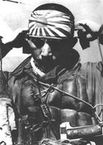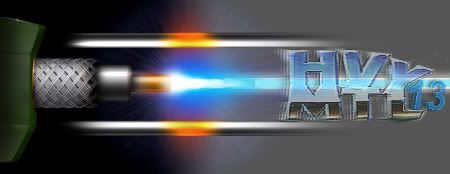Tofke
Posts: 171
Joined: 11/9/2005
From: Moeskroen (Bel)
Status: offline

|
here a very interesting article about LL at battleshipnc.com
The "Long Lance Junior"
Japanese submarines never used the Type 93, "Long Lance" torpedo. That 24-inch, oxygen-powered torpedo was surface-launched, mainly by destroyers. The oxygen-powered torpedo designed for submarine launch, and used by the I-19 in its attack on the Wasp was the 21-inch Type 95, Mod 1. Both were deadly, the best in the world at that time. But, the Long Lance could run 22,000 yards at 49 knots, carrying 1,078 pounds of high explosive in its warhead. The shorter Type 95 was not nearly so powerful, able to travel 13,000 yards at 45 knots, with 891 pounds of explosive in its warhead.
The Type 95 submarine-launched torpedo, although modeled after and following the same principles as the Type 93 Long Lance, was necessarily shorter and of reduced diameter in order to be accommodated in the limited confines of a submarine. I have always thought of the Type 95 as "Long Lance Junior."
- CAPT Ben W. Blee USN (Ret)
The "Long Lance" Torpedo It was perhaps the best torpedo of the war. What made it so good? Several things made the oxygen type "Long Lance" torpedo "so good."
Size: while the difference between a 21" and a 24" torpedo in diameter is not that much, the warhead on the larger one varies by the ol' "pi" ratio. The Japanese warhead was also longer in relative terms, making for a much more deadly load on the target.
Simplicity: The development of the Japanese oxygen torpedo started in earnest back in the 1920's, and it was a "mature" weapon by the 1940's. Other nations tried to produce them as well (England and France, for example), but gave up as they felt the hazard was not worth the benefits. The Japanese continued in their efforts, and partially succeeded. The IJN also did not flirt with the magnetic exploder as did the US, Germany and Great Britain.
Speed: Oxygen torpedoes have two benefits: lack of combustion byproducts that leave a wake (most notably nitrogen; air torpedoes have less oxidizer (oxygen) and more inert gasses (nitrogen primarily) in their air flasks), and range (pure oxygen takes up less space than the same amount of oxygen as a component of air (tops of 20% by volume); more space for fuel and oxidizer. Oxygen oxidized flames also burn hotter (better combustion), so a given amount of fuel could stretch farther. All this translated out into going further faster.
I don't have the figures with me, but I think that the top speed on our torpedoes (which only allowed a very short range) was well below the lower speed on the Japanese torpedo (which allowed a range that was so great we had trouble believing that it actually could occur). At their top speed, the things zipped along near 50 knots (compared to a top ship speed of 37 knots or so) out to a distance that was greater than our "close range". Faster to the target means less time to evade, hence more accurate. Longer range meant that we found ourselves surprised by Japanese torpedo attacks on at least three occasions, thinking that we ran over mines as there was no way that the nearest Japanese forces could have torpedoed us. We were, of course, wrong. The sinking of the USS Wasp, damage to the USS North Carolina, and fatal damage to a destroyer (don't recall the name; USS Edsall perhaps?) all by _one_ torpedo salvo from a single Japanese submarine, remains the greatest monument to Japanese torpedo systems (and to the American refusal to believe that someone else could do something better than us).
Skads of them: Japanese ships were heavy on torpedo tubes, and even heavier on reloads. Some Japanese destroyers could reload twice, and could complete the reload cycle in twenty minutes or so. This tends to put more torpedoes in the water, increasing the likelihood of hits
Systems: The Japanese put a lot of effort into their torpedo warfare, much moreso than the rest of the world. They saw the torpedo as an equalizer for the inferiority of size that they were persuaded to accept as part of the naval treaties entered into post WWI. They integrated the torpedo attack at both the destroyer and the cruiser levels (whereas most other nations made the destroyer use a "second function" and pretty well ignored the cruiser level (although some early US cruisers had tubes, they were almost completely abandoned by World War II (and for some pretty good reasons, see below). Torpedo directors were a major part of surface ship fire control systems, not a addon as found elsewhere.
Skills: They practiced their doctrine, firing real torpedoes all the while, and not in the fairy tale conditions of the Caribbean Sea, either.
Japanese training was intensive, brutal (the North Pacific during the winter is not a tranquil place) and all encompassing. Unlike shells, torpedoes could be fired and recovered to fire again in a training situation. The IJN had a whole class of torpedo support craft (covered in post war intelligence reports by the USN, by the way).
Stupidity (American): A lot of the IJN's success was due to the USN fighting a war that fit the IJN's doctrine. Early on, we persisted in using radar like it was eyesight, maneuvering in formations that suited the Japanese proclivity for torpedo attacks, and misusing one of the American "secret weapons" (the automatic loading 6" light cruiser) to almost a criminal extent. Once we got things sorted out, we did a lot better. The Japanese did a lot of stupid things too; somewhere in 1943 or thereabouts both sides straightened themselves out and the good aspects of both navies produced some interesting surface combats. At that point, the torpedo was nowhere near as dominant as it was when we were feeling our way early on.
In short, there were a number of factors that combined to make the Japanese torpedo threat so effective during World War II. The torpedoes themselves were only one of many such factors that made it a success (from the Japanese point of view, of course).
The "all torpedo approach" to light forces has its disadvantages. One is time on target for the weapons system; the torpedo can be avoided while the 6" shell cannot. Another is the massive concentration of explosives outside of the warship's protective systems. This is why the US gave up on torpedoes on cruisers. The Japanese lost one ship (don't remember which one) when the torpedoes were touched off by otherwise minor gunnery damage, and they did jettison torpedoes on more than one occasion when this was threatened. Torpedoes are also expensive compared to main gun rounds, even when you compare the number of the shells that have to be fired to get the same effect.
One more thing: not all Japanese torpedoes were of the "Long Lance" variety. They also had 21" torpedoes on many of their submarines and some older surface ships. All of their torpedoes were well made (albeit mostly hand fabricated) and functioned well, according to post war tests by the Naval Intelligence Mission to Japan. The report (available on cheap microfilm from the Naval History Center in Washington DC) will tell you more than you ever want to know about the subject...
Tofke
_____________________________
|
 Printable Version
Printable Version







 And by the way, a surface ship torpedo could be 3 or 4 times heavier than an airborne torpedo (the same with the warhead), something the Kate absolutely couldn't hope to carry. Basically, maybe the Kate's type 91 were based on the same inner design than the Type 93 "long lance" (not sure about that), but that was probably the only characteristic they shared, if they shared any apart from being Japanese torpedoes both of them
And by the way, a surface ship torpedo could be 3 or 4 times heavier than an airborne torpedo (the same with the warhead), something the Kate absolutely couldn't hope to carry. Basically, maybe the Kate's type 91 were based on the same inner design than the Type 93 "long lance" (not sure about that), but that was probably the only characteristic they shared, if they shared any apart from being Japanese torpedoes both of them 














 New Messages
New Messages No New Messages
No New Messages Hot Topic w/ New Messages
Hot Topic w/ New Messages Hot Topic w/o New Messages
Hot Topic w/o New Messages Locked w/ New Messages
Locked w/ New Messages Locked w/o New Messages
Locked w/o New Messages Post New Thread
Post New Thread